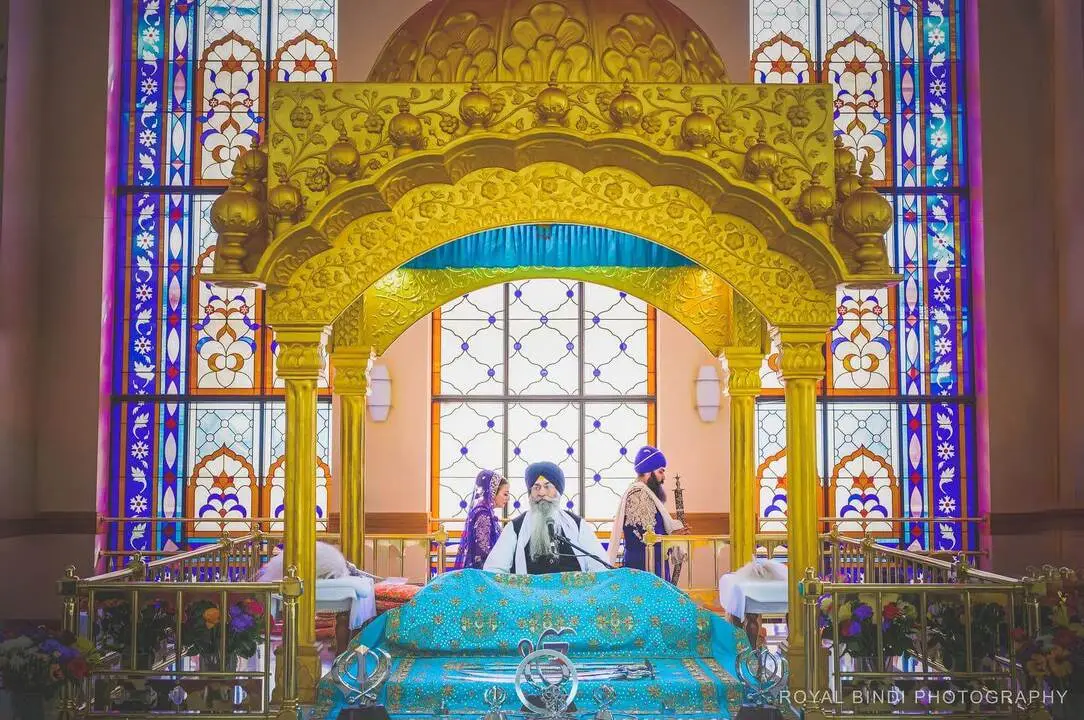Anand Karaj: A Sacred Sikh Wedding Ceremony at the Gurdwara
Anand Karaj, which translates to “Blissful Union,” is the Sikh marriage ceremony that symbolizes two individuals’ spiritual and emotional union. Held within the sacred walls of a Gurdwara, this ceremony is a harmonious blend of devotion, tradition, and community, reflecting the deep-rooted values of Sikhism.
Key Highlights
- Anand Karaj, meaning “Blissful Union”, is a Sikh marriage ceremony symbolizing the spiritual and emotional union of two individuals.
- The ceremony takes place in a Gurdwara and involves the couple circumambulating the Guru Granth Sahib while reciting hymns representing stages of married life.
- It emphasizes love, commitment, faith, and the core Sikh values of equality, sharing, and unity.
For couples embarking on this sacred journey, the Anand Karaj is a profound celebration of love, commitment, and faith. It is not just a wedding but a heartfelt expression of their cultural and religious heritage, creating cherished memories that last a lifetime.
Preparation for Anand Karaj
The preparation for Anand Karaj begins well before the wedding day. Families of the bride and groom visit the Gurdwara to seek blessings and make arrangements with the Granthi (Priest).
The bride and groom also take part in pre-wedding rituals such as the Kurmai (Engagement) and the Mehndi ceremony, where the bride’s hands are decorated with intricate henna designs. To preserve the memories of their special day, many couples opt for a Sikh wedding photographer who can capture the ceremony’s unique cultural aspects.
The Ceremony
On the day of the wedding, the ceremony begins early in the morning. The bride and groom, dressed in traditional attire, arrive at the Gurdwara with their families. The groom is usually accompanied by a Baraat (wedding procession), which the bride’s family welcomes at the entrance of the Gurdwara.
- Ardaas (Prayer):
The ceremony starts with an Ardaas, a prayer seeking blessings from Waheguru (God). The Granthi conducts this prayer and involves the entire congregation.
- Kirtan:
Following the Ardaas, the congregation sings hymns from the Guru Granth Sahib, the holy scripture of the Sikhs. The hymns, or Shabads, focus on the virtues of marriage and the spiritual journey of the couple.
- Lavan (Marriage Vows):
The core of the Anand Karaj is the Lavan, which consists of four hymns composed by Guru Ram Das. These hymns are sung as the bride and groom circle the Guru Granth Sahib four times, signifying their commitment to each other and their faith.
Each round, or Phera, is symbolic of different stages in the married life and spiritual union of the couple. The Pheras are a significant part of the ceremony, and many couples choose to video record this special moment through an expert wedding videographer.
- Ardaas and Hukamnama:
After the Lavan, another Ardaas is performed, followed by the Hukamnama. The Hukamnama is a random verse from the Guru Granth Sahib chosen to offer guidance and blessings to the newlyweds.
Post-Ceremony Celebrations
Following the religious ceremony, the couple and their families gather for a Langar, a community meal served at the Gurdwara. This meal embodies the Sikh principles of equality, sharing, and unity.
The joyous occasion is often followed by a reception where family and friends celebrate with music, dance, and traditional Punjabi cuisine.
Conclusion
Anand Karaj is not just a wedding ceremony; it’s a profound spiritual journey that marks the union of two souls. Conducted in the serene and sacred environment of the Gurdwara, it embodies the core values of Sikhism, including love, equality, and devotion.






